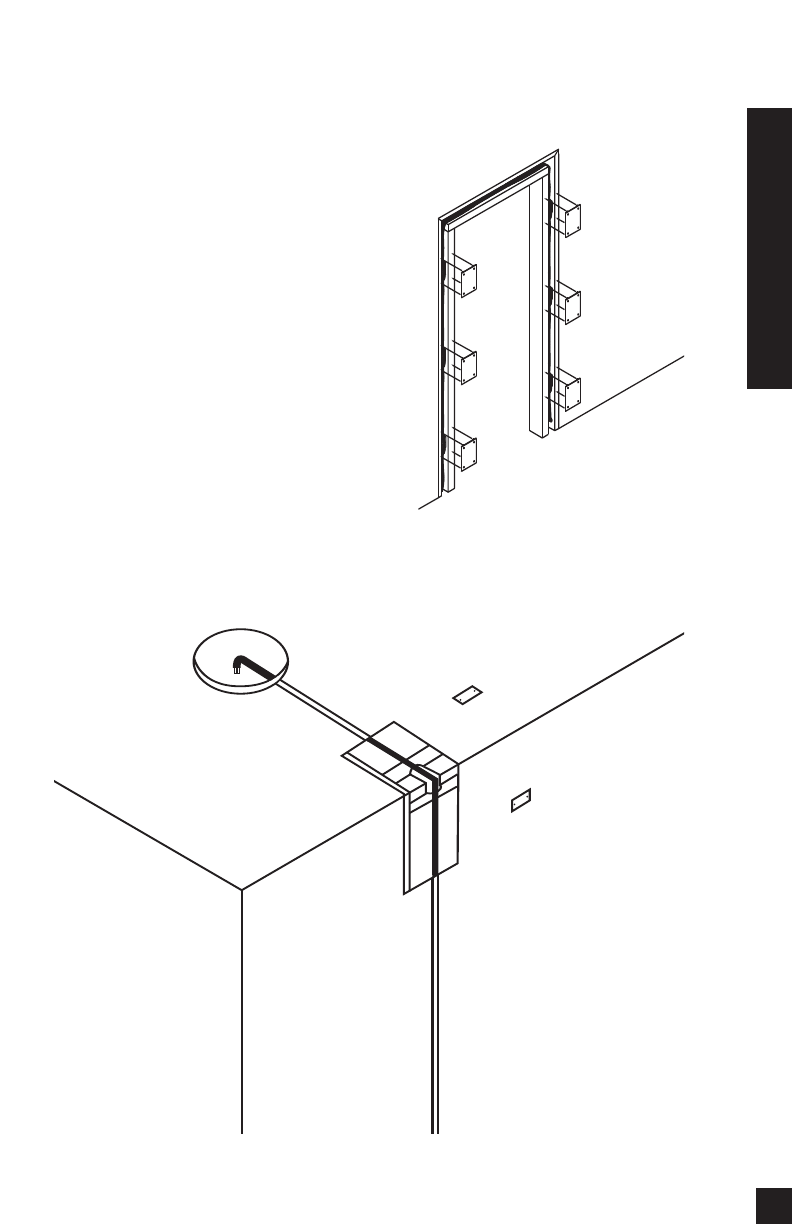
When you don’t have access above or
below the wall, try to estimate the existing
wire and pipe locations from the positions
of electrical outlets and plumbed fixtures
on both sides of the wall. Take a look at
the outside of your house too, sometimes
conduit, vents or drain pipe will be visible
that give useful information. Choose the
route with the fewest potential obstacles.
If your house is built on a slab or you are
wiring between two finished floors, look
for baseboards which could be removed
and replaced with the wire behind them.
Doorjambs can be removed and often
have enough space for speaker wire all
the way around the door
(See Figure10).
Sometimes, an under-the-carpet run is
possible (there are special flat speaker
wires made for under-the-rug wire runs).
As a last resort, heating and air condition-
ing vents can be used as wire raceways for
12
Installation Fundamentals
Figure 10
Figure 11
Diagram of ceiling speaker cut-out with ceiling joists notched for wire run.
The door jamb has been removed and the
speaker wire concealed between the wall and
the jamb. Nail plates are installed to protect
the wire and the door jamb is replaced


















